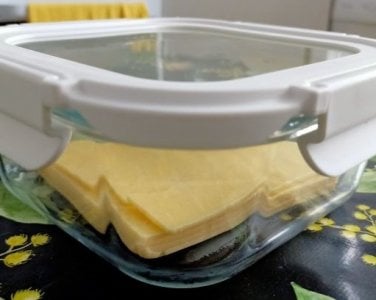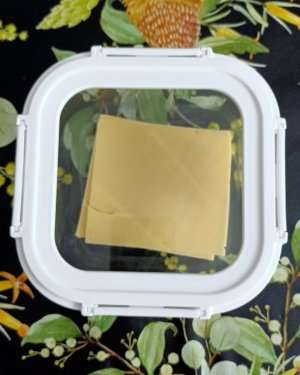Cheese expert reveals common mistakes of cheese consumers — “You’re eating it wrong!”
By
- Replies 7
Who doesn’t love a good bit of cheese? We are guessing most of you are cheese lovers like us. The delicious dairy product is a staple in most households across the globe.
However, those in the know seem to think that we are enjoying cheese wrong! How can one possibly enjoy it wrong eh?
A cheese expert has revealed the correct way of consuming the ever-popular dairy product, correcting the common mistakes of most consumers.
Edward Hancock, 39, founder of Cheesegeek — an online cheese retailer that delivers British artisan cheese directly to customers' doors — shared some expert advice on how to get the most out of your cheese-eating experience.
Below are some of his tips:
1. Only have four or five cheese varieties on a cheeseboard
Serving big chunks of 4 or 5 types of cheese is the best way to spice up your cheeseboard. Credit: Carol Driver.
Edward revealed that the best way to serve a cheese board is to only include four to five different types of cheese.
"Four or five gives you enough chance to showcase a different variety of cheeses, such as hard, soft and blue, as well as perhaps a goat or sheep milk cheese and some different colour, such as the nettles of Yarg, or the orange of an Old Winchester," he said.
The cheese expert also emphasised that serving big chunks — rather than tiny pieces of cheese — is best as it showcases the flavour of the dairy product.
He said: "I would tend to go for a semi-soft and semi-hard cheese to start with, such as St Helena and Kirkhams Lancashire, followed by a really big mature cheddar or aged gouda like Pitchfork or Old Winchester, then finish with a soft cheese, like Baron Bigod and a blue cheese such as Stichelton."
Seasonality is also one of the factors that you should consider when choosing the type of cheese that you will serve.
According to the cheese expert, fresh goat's milk cheese is best served during springtime. Meanwhile, washed-rind cheeses such as Epoisses are better served during winter.
2. Store your cheese at 8 degrees
Edward suggested re-wrapping unused cheese in its packaging. Unwrapped cheese has a tendency to dry out while wrapping it in plastic wrap can make it "sweat".
He said: "Place it in a separate compartment (for example, a salad drawer) of your fridge as cheese can take on flavour from other things."
The cheese expert also said to separate blue cheese from other types of cheese as "they will try to turn everything else blue".
"You want high humidity and a consistent temperature of around 6-8 degrees (or slightly higher at 10 degrees is fine if the cheese is whole/uncut... no cheese stays whole or uncut in my house for more than about five seconds though)," he said.
3. Don't be put off by mould... unless it's supermarket cheddar!
The cheese expert said that you should not be scared of moulds forming on your cheese unless the cheese you’re keeping is a supermarket cheddar. Credit: Getty Images/Cavan Images RF.
You read that right, folks! Mould on cheese is not something we should be scared off, according to the expert.
Edward explains: "Blue cheese is mouldy and you'd also find fluffy mould on the surface of many soft kinds of cheese such as Vacherin and Rollright. Embrace it, this is the beauty of artisan cheese and it adds flavour and character."
"If there are any gaps and cracks in the cheese, oxygen can get into it, and activate any blue mould spores. In many cases, it adds a really interesting flavour and I would encourage you to give it a taste."
For those who can't stomach the thought of tasting a mouldy cheese, Edward said that you can just cut it away and eat the rest of the cheese.
However, if moulds start forming on your supermarket cheddar, you should consider discarding it as the mould "likely came from your fridge rather than the place where the cheese was maturing".
4. Cheese and wine pairing
"Cheese and red wine is historic, but white wine is actually generally a better bet," Edward said.
The cheese expert advised that if you are not sure which alcoholic beverage to pair with your cheeseboard, your best bet is to pair it with a lightly oaked Chardonnay.
He explained: "Malolactic fermentation (malic acid converting to lactic acid) that gives these wines a creamy, buttery flavour matches perfectly with the lactic acid (creaminess) in cheese."
For red wine fans, Pinot Noir and Gamay could work well with a broad range of cheeses, according to the expert.
5. Some cheeses shouldn't be melted
Not all types of cheese are meant to be melted. Credit: Carol Driver.
While melted cheese is good in most dishes, not all types of cheese can be melted as they stay clumpy even if you melt them for long periods of time.
Edward said that some of the examples of cheeses that should not be melted include Fresh goat's milk cheeses as well as some of the fresher, younger territorial cheeses like Cheshire.
The cheese expert shared some of the best melters, saying: "Some of the world's greatest melters are cheddar, of course (but not too aged) and the alpine cheeses (Comte, Gruyere, Raclette and Emmental)."
"Ogleshield is a great British melter in the style of Raclette, but made in Somerset."
"And this is before we even get into baking a Camembert (try Tunworth from Hampshire with some garlic, rosemary and truffle honey) or a Vacherin."
So, had you been enjoying your cheese ‘correctly’? We say, enjoy it however you like, but trying some of these things out might enhance your experience!









